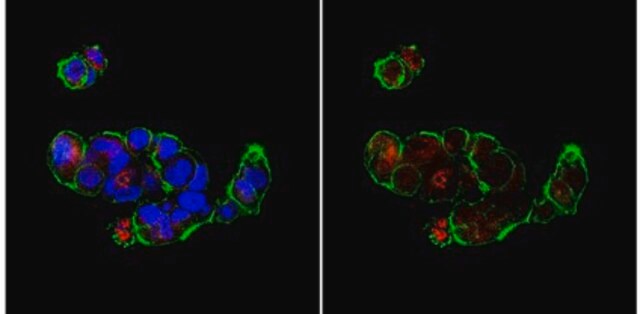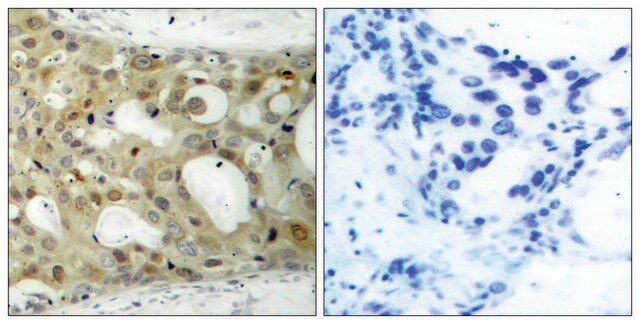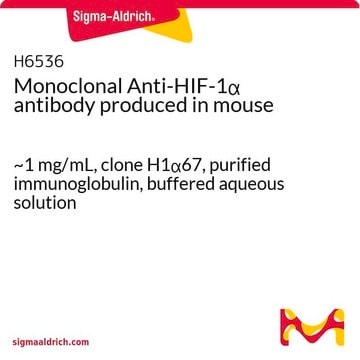C7729
Anti-Caspase 9 antibody produced in rabbit
affinity isolated antibody, buffered aqueous solution
Synonyme(s) :
Anti-APAF-3, Anti-APAF3, Anti-ICE-LAP6, Anti-MCH6, Anti-PPP1R56
About This Item
Produits recommandés
Source biologique
rabbit
Niveau de qualité
Conjugué
unconjugated
Forme d'anticorps
affinity isolated antibody
Type de produit anticorps
primary antibodies
Clone
polyclonal
Forme
buffered aqueous solution
Poids mol.
antigen 35-47 kDa (two bands)
Espèces réactives
human, rat
Technique(s)
immunohistochemistry (formalin-fixed, paraffin-embedded sections): 1:40 using microwave-treated tissue sections of human and rat heart
immunoprecipitation (IP): 10 μg using HeLa mitochondrial RIPA lysate (500 μg)
microarray: suitable
western blot: 1:300 using whole extract of human Jurkat cells
Numéro d'accès UniProt
Conditions d'expédition
dry ice
Température de stockage
−20°C
Modification post-traductionnelle de la cible
unmodified
Informations sur le gène
human ... CASP9(842)
rat ... Casp9(58918)
Catégories apparentées
Description générale
Immunogène
Application
Western Blotting (1 paper)
Actions biochimiques/physiologiques
Forme physique
Clause de non-responsabilité
Not finding the right product?
Try our Outil de sélection de produits.
Code de la classe de stockage
10 - Combustible liquids
Classe de danger pour l'eau (WGK)
WGK 3
Point d'éclair (°F)
Not applicable
Point d'éclair (°C)
Not applicable
Certificats d'analyse (COA)
Recherchez un Certificats d'analyse (COA) en saisissant le numéro de lot du produit. Les numéros de lot figurent sur l'étiquette du produit après les mots "Lot" ou "Batch".
Déjà en possession de ce produit ?
Retrouvez la documentation relative aux produits que vous avez récemment achetés dans la Bibliothèque de documents.
Les clients ont également consulté
Notre équipe de scientifiques dispose d'une expérience dans tous les secteurs de la recherche, notamment en sciences de la vie, science des matériaux, synthèse chimique, chromatographie, analyse et dans de nombreux autres domaines..
Contacter notre Service technique









